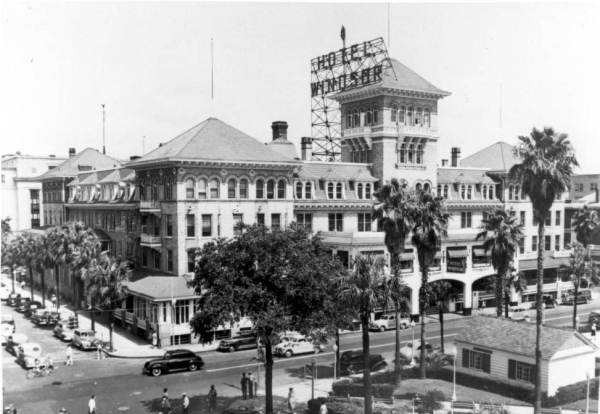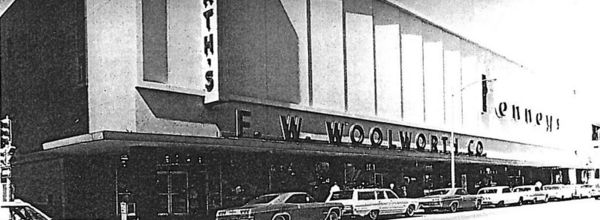ChazzCreations Limited
© 1974-2025 ChazzCreations.com A Non~profit Organization. Over 50 years of Family Genealogy Research. Pictures may be used or copied with the hopes that it keeps the family history going to the next generation...
ChazzCreations
PO BOX 1909
POST FALLS, ID 83877
- Family Genealogy Research
- Contact Us
- Thomas~Shaw~Langston~Scott~Roberts~Dell: Family Connections
- Isham B. Thomas Family History
- Shaw Family History
- Benjamin Thomas Shaw Family History
- Shaw Farms
- Matilda Eva Shaw~Waters~Mixon~Novak
- Joseph Shaw & Lick Skillet ~ Cohutta ~ Red Clay Georgia
- Dell Family of Alachua County
- Kicklighter Genealogy
- Langston Family Ties
- Roberts Family History
- Scott Family Connection
- City of Odum, GA (son of Mary Thomas & James Odum)
- Thomas: William Matthew & Avoy A. Thomas Connection
- Thomas: Rowland Thomas Family of Alachua
- Thomas & Douglas Cemetery, Alachua
- Rimes~Dekle~Rivers~Ulmer~Cone: The Family Connections
- Waters~Barron~DeLoach~Fugate~Gornto~Townsend: Connections
- Waters & The Florida Rail System
- Military Service: Family History
- 1700's Quit Rent
- French & Indian War 1754-1763
- The Revolution War 1775 -1783
- War of 1812
- CSA: Family Connections
- CSA: Florida
- CSA: Officers
- CSA: The Four Lee's
- CSA: Pictures of the War
- CSA: Navy
- The Civil War: 150 years later
- The Seminole Wars
- Spanish American War
- World War I
- World War II
- Korean War
- Vietnam Era
- New Generations in the Military
- Funeral Notices
- Family, Marriage & Cemetery Links
- Florida History
- Florida Pictures
- City of Alachua
- Alachua County History
- Alachua County Historic Towns
- Alachua County Historical Homes
- Alachua County Significant County Buildings & Sites
- Gilchrist County
- Union County (Rimes~Dekle)
- My Miami Dolphins
- Grandchildren's Site
- Award Winning Photography
- Robert Brewer & Dunham Family History Conections
- Warren H. Folks
- Flanagan Family History
- Gerald Lemuel Mixon
- Mize Genealogy
- John Aleis Mize Family History
- Mize Hazel Green Homestead
- Hazel Green Academy History
- Hazel Green-Bowling Green-Mize, KY Pictures
- Wolfe County & Kentucky Statehood History
- The Sigma Chi Fraternity
- Hazel Green Cemetery
- Cockrell Family History
- Oldham Family History
- Rose Family History
- Swango Family History
- Swope Family History
- Tipton Family History
- Trimble Family History
- Walker Family History
- WindWalkerWaters Spiritual Wisdom
Jacksonville
After Spain ceded the Florida Territory to the United States in 1821, American settlers on the north side of the Cow Ford decided to plan a town, laying out the streets and plats. They named the town Jacksonville, after celebrated war hero and first Territorial Governor (later U.S. president) Andrew Jackson. Led by Isaiah D. Hart, residents wrote a charter for a town government, which the Florida Legislative Council approved on February 9, 1832.
During the American Civil War, Duval County produced several units that fought for the Confederate States Army. At least two were raised out of Jacksonville: the Jacksonville Light Infantry, a militia unit formed in 1859, and the Duval County Cow Boys, mustered in during the summer of 1861. Both units fought as part of the 3rd Florida Infantry. The St. John's Greys, the Milton Artillery, and Company H of 1st Florida Cavalry Regiment were also all formed by men from Jacksonville.

Section of a light battery by the St. Johns River in Jacksonville during the Civil War
The Great Fire of 1901, in which over 2,300 buildings burned to the ground, may have ignited the trend for transformation that Jacksonville needed. From the ruins of a colonial frontier past emerged a modern skyline of concrete and stone. A public library donated by Andrew Carnegie was built in 1905. Noted New York architect Henry Klutho brought the new Prairie-style to the city. The first paved road connecting the city to the beach was opened in 1910. The new industry of film production came to the city in the early 1900s and was an important part of the economy until World War I.

Ruins of the courthouse and armory from the Great Fire of 1901 1887 Jacksonville mail carrier, Leslie's illustrated weekly newspaper
1887 Jacksonville mail carrier, Leslie's illustrated weekly newspaper

 Hotel Windsor, Jacksonville
Hotel Windsor, Jacksonville



 1917 South Jacksonville Ferry Boat Entrance
1917 South Jacksonville Ferry Boat Entrance


 Cheek Mansion
Cheek Mansion
1940
Silver Springs, Florida
1973 Silver Springs
Silver Springs - Glass Bottom Boat
Silver Springs Glass Bottom boat
View from the Glass Bottom Boat
Gator in the Silver Springs
Silver Springs Swamp Area
Lloyd Bridges 'Sea Hunt' Hut
Silver Springs Alligator Pit

Completed in 1955, this structure anchored the west side of Hemming Park, on the corner of Monroe and Hogan Streets, bringing F.W. Woolworth's and JC Penney to a site that was once the location of Hotel Windsor. Fannie Louise retired from JC Penny's to take care of her mother, Conye Shaw.
The Hotel George Washington

In 1964, we had to flee from Jacksonville Beach and go into the City of Jacksonville, to avoid Hurricane Dora coming in. We stayed at the George Washington Hotel...
The Hotel George Washington: on the corner of Adams and Julia Streets in Jacksonville, Florida, was a 15-story luxury hotel that was in operation from 1926 to 1971. The local firm of Marsh and Saxelbye served as architects. In its later years, it was one of only two luxury hotels in the downtown area. By the 1960s, it was the only five-star hotel in the area after the demise of the Hotel Roosevelt.
On Armistice Day 1925, local businessman Robert Kloeppel announced to crowds in downtown Jacksonville that a luxury hotel would be built. Other investors built the Hotel Roosevelt (then called the Carling Hotel) to compete with Kloeppel, and both hotels were constructed throughout 1926. On December 15, the George Washington was complete. The mayor at the time, John Alsop, along with the current and former Florida governor, were on hand for ribbon-cutting ceremonies. Radios were installed in every one of the 350 rooms so visitors could listen to opening-day festivities, broadcast by radio station WJAX. Kloeppel spent $1.5 million dollars of his own money to construct the hotel. The "Hotel George Washington" sign, built on the rooftop, was the first neon sign in Jacksonville.
The Hotel George Washington, in its heyday, was the center of cultural activities in Jacksonville. The George Washington Auditorium, built in 1941, was the biggest concert hall in town at the time (replacing the Duval County Armory), big enough for classical music events and cotillions. The Hotel housed a steak house and a cocktail lounge. The Dance Hall in the Hotel was the Rainbow Room. The Hotel housed a Rexall drugstore and a barber shop. Charles Lindbergh stayed at the George Washington while visiting Jacksonville.
The Beatles were scheduled to stay there, but due to a mix-up regarding hotel occupancy, they were denied rooms. On September 11th 1964, the Beatles flew from Montreal to Jacksonville, Florida, in a trip that had been time delayed due to recent and extensive hurricane damage along the Florida coast, affecting the Jacksonville area. When attempting their arrival into Jacksonville, the Beatles were detoured to Key West, and were booked into the Key Wester Motel. It was then learned that the Hotel George Washington in Jacksonville would be unable to provide them with rooms at the last second.
Not allowing the difficulties of their arrival and their stay to stop them, the Beatles still appeared for the press conference at the Hotel George Washington, and their concert at the Gator Bowl. With civil rights being a heated issue in America in 1964, the Beatles had refused to accept the booking at the Gator Bowl until they received assurance that the audience would not be segregated by race. While eating with the press, Ringo stated, "We usually eat in the room, but seeing the hotel's got no room for us, we have to eat here." Due to the damage from Hurricane Dora, approximately one quarter of the people who had already purchased tickets were unable to attend the concert.
In 1964, most of the businesses which operated from the Roosevelt's ground floor moved into the George Washington. Despite the new infusion of business, behind-the-scenes turnover caused the George Washington to fall into disrepair. In 1963, original owner Robert Kloeppel sold the George Washington to dog track magnate Bill Johnston, who in turn sold the hotel to other investors in 1969.
After 1969, one by one, the businesses inside the ground floor went out of business. The hotel was closed in 1971 and torn down in 1973. Currently, the site is occupied by the new federal court building in downtown Jacksonville.
Hurricane Dora



The old amusement park at Jacksonville Beach, which was taken out by Hurricane Dora




Jacksonville Beack
LeChateau, Dora 1964
Daytona Beach Boardwalk 


Daytona Beach Bandshell 
Daytona Beach1952
The Ormond Hotel

Henry Morrison Flagler 1830-1913

Ponce De León Hotel/Flagler College St Augustine 2005
In 1914, John D. Rockefeller arrived at The Ormond Hotel for the winter season, and rented an entire floor for his staff and himself. After four seasons at the hotel, he bought The Casements, a nearby estate also beside the Halifax River.

1889 Hotel Alcazar

Ormond Beach-The Rockefeller Mansion 1918
 Halifax River Bridge at Ormond Beach
Halifax River Bridge at Ormond Beach
Jacksonville, FL
Prudential Building
Eva Shaw & lot more family members worked there for a time.

Jacksonville along the StJohns River
Jacksonville Beach - Fan (90) & Charley 2008

Jacksonville Beach Boardwalk 1959
Jacksonville Beach 1950 
Jacksonville Beach 1940's

Daytona 500 - 1966 Entry form
Weeki Wachee Springs
Weeki Wachee Springs is about 12 miles southwest of Brooksville at the head of the Weeki Wachee River.

Weeki Wachee Springs Mermaids

Weeki Wachee Springs Mermaids

Weeki Wachee Springs Mermaids
Weeki Wachee Springs Mermaids

Weeki Wachee Springs Mermaids



© 1974-2025 ChazzCreations.com© © All rights reserved
ChazzCreations
PO BOX 1909
POST FALLS, ID 83877
